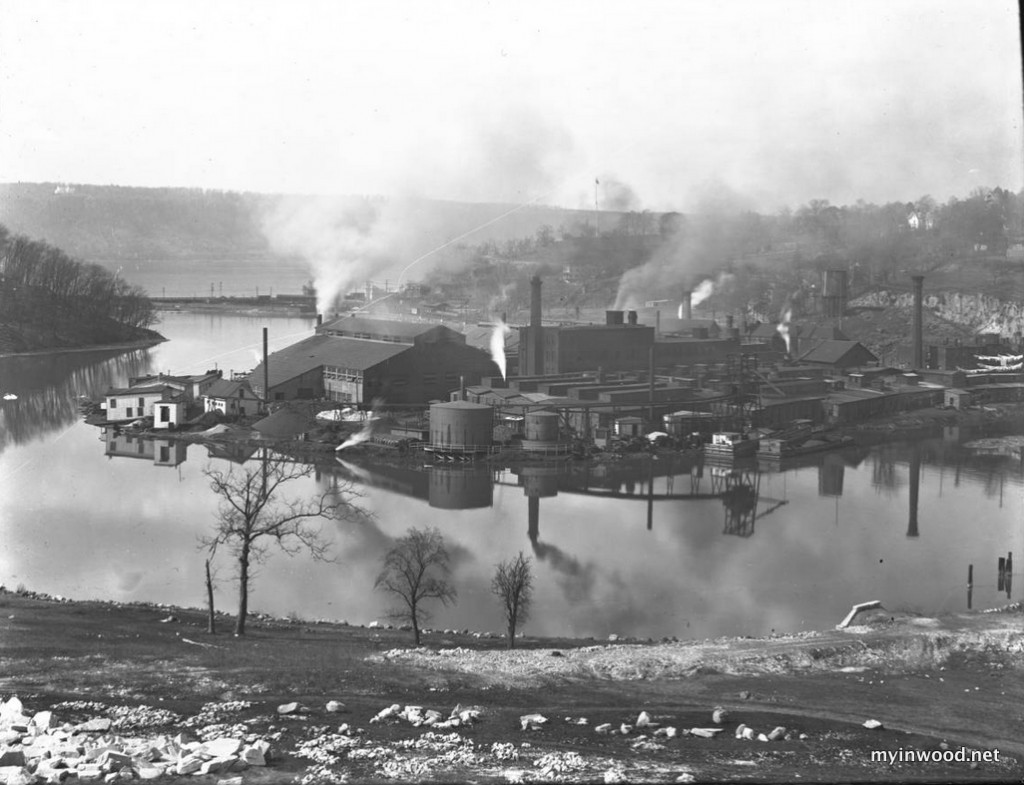
Passing through the lush parks and tree-lined streets of Inwood it is hard to imagine that the area was once home to heavy industry. But, for most of Inwood’s modern history, the air was choked with smoke and soot. Huge coal burning furnaces once powered foundries, generated electricity and incinerated garbage.
“I well remember the cinders in the air,” recalls former Inwood resident John Stone. “The collars of my white shirts would be black by the end of a hot summer’s day. I can still picture my mother scrubbing my shirt collars with a brush and a paste of Rinso and water. Of course, apartment buildings burned their trash and that also contributed to the problem.“
Let’s take a look back at the industry of Inwood’s past:

The Johnson Ironworks: (Spuyten Duyvil Creek)
Long before the familiar Henry Hudson Bridge guarded the entrance to the Spuyten Duyvil a giant, belching behemoth of the industrial era dominated the landscape. For Inwood and points immediately north the Johnson Ironworks represented, at its peak, a paycheck for some 1,600 employees and a polluting eyesore for others. Read More

Kingsbridge Powerhouse: (East of Broadway between 216th and 218th Streets)
On this spot once stood a transportation marvel–a trolley barn and massive brick powerhouse—the largest the world had ever seen. The giant power generating station, with it’s roaring engines, once powered a transportation system for a new era—A vast trolley network that ran from City Hall to Westchester. Read More

Sherman Creek Power Generating Station: (Sherman Creek & Harlem River) Now an uptown treasure, Swindler Cove once sat in the shadow an eight-story, 62,000 square-foot, coal-burning power station whose roar could be heard throughout the neighborhood. The powerhouse was massive–built with some eight million bricks; the plant had a framework that contained sixteen thousand tons of structural steel. Four brick-lined steel smokestacks measured 325 feet in height. Read More

Department of Sanitation Destructor Plant: (215th Street, East of Broadway)
The smokestacks, part of a decommissioned Department of Sanitation “destructor plant,” once incinerated some 7,500 tons of New York City garbage daily. The fires of the incinerator burned trash round-the-clock and coughed up so much smoke, soot and other horrifying vapors that residents of one apartment building on nearby Park Terrace East felt compelled to file a lawsuit against the city just years after the $1.5 million facility went on-line. Read more








